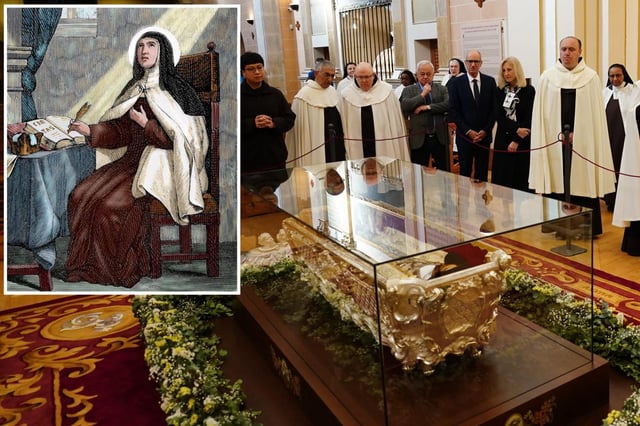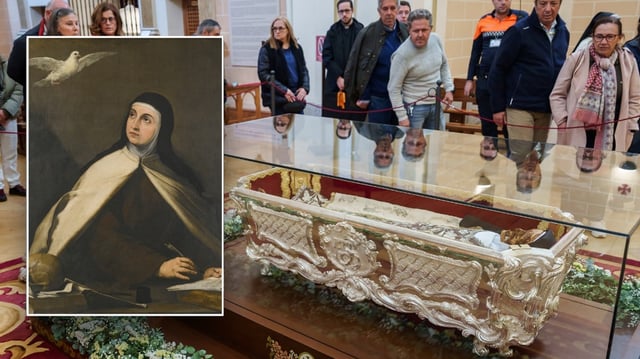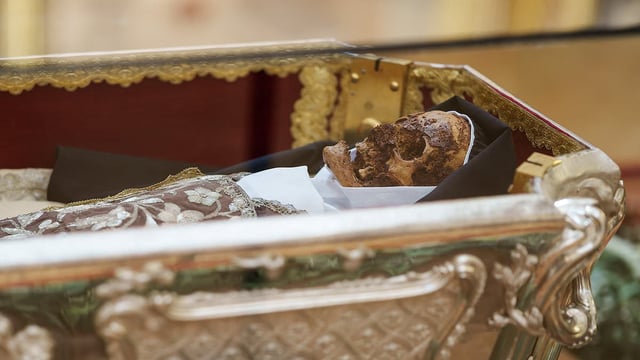Overview
- St. Teresa of Avila’s remains were publicly displayed in Alba de Tormes, Spain, on May 12–13, marking the first public viewing since 1914.
- Her body, described as 'incorrupt,' remains remarkably preserved, with visible facial features, intact limbs, and preserved tissues in key areas.
- A multidisciplinary team is conducting DNA, X-ray, and anatomical studies, with samples sent to an Italian lab for further analysis; results are expected in the coming months.
- Researchers have identified calcareous spines on her feet, a condition that caused significant pain but did not deter her from walking long distances late in life.
- Strict security measures, including a ten-key access system held by church and civic authorities, ensure the safeguarding of her sacred remains.



